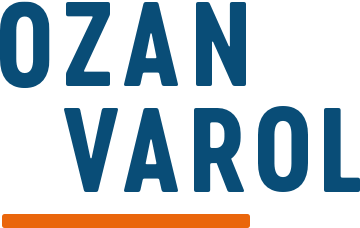As a young law professor, I frequently hit the road to present papers at academic conferences. Many of these presentations were friendly affairs, but some took a hostile turn, particularly during the question-and-answer period.
As a mentor once told me, academic arguments can be particularly vicious because the stakes are so low. What’s more, I prided myself on turning conventional wisdom on its head and, as a result, ruffled more than a few feathers in the process.
But in the end, I realized that my presentation style was to blame for most antagonistic turns.
In these presentations, I would put my best foot forward and gloss over the inevitable flaws in my arguments. I would highlight the strengths, back them up with facts, and await a standing ovation.
It never came.
As I was busy reciting one carefully polished argument after another, the audience was busy doing what good legal academics do: looking for holes. They would take turns bombarding me with one incisive question after another.
About two years ago, I decided to take a different tack. I dedicated the first 15 minutes of my talk to presenting the affirmative arguments in my paper.
But for the last 5 minutes, I flipped the script.
I told the audience that, having presented my side of the argument, I would now switch perspectives. I would play the role of the critic and explain why my arguments weren’t as persuasive as I just made them sound.
As I began to attack my own arguments, the atmosphere in the room changed. For starters, this unexpected turn of events startled a few audience members out of their deep daydream.
But more importantly, I could feel the tension in the room dissipate.
The critique of my own paper softened their defenses. They turned from foe to friend.
During the question and answer period, instead of trying to tear up my arguments, the audience brainstormed with me on how to bolster them. Although there were still a few adversarial remarks, most “questions” I received were in the following mold:
“Here’s how you can respond to that counter-argument you mentioned. . .”
“I don’t think that’s much of a concern at all . . .”
“I recently read an article that supports your argument.”
When we pitch something–whether in an academic paper, a business meeting, or a job interview–it’s only natural to put our best foot forward, tout our strengths, and downplay our weaknesses.
But this approach often falls flat.
Audiences are trained to be skeptical. To them, you’re the used car salesman, and they’re the customer who just stepped into the lot with a blank check.
They know you’re there to “sell” them, so they’re on guard. They assume you’re hiding something. As you’re presenting, they’re busy poking holes in your arguments and chomping at the bit to highlight your weaknesses.
You can’t change this dynamic by drowning your audience in a flood of seemingly well-crafted arguments and carefully researched facts.
The best way to take the wind out of your adversaries’ sails is to include your weaknesses in your own pitch.
This approach worked wonders for the start-up company, Babble, when they were trying to raise funding. Here’s the story, as told in Adam Grant’s excellent book, The Originals:
After having their first child, Rufus Griscom and Alisa Volkman were appalled by the amount of false advertising and bad advice being offered about parenting. They started an online magazine and blog network called Babble to challenge the dominant parenting clichés and tackle the cold, hard truth with humor.
In 2009, when Griscom pitched Babble to venture capitalists, he did the exact opposite of what every entrepreneur has been taught to do: he presented a slide listing the top five reasons not to invest in his business. This should have killed his pitch. Investors are looking for reasons to say yes, and here he was, hand delivering a list of reasons to say no. Entrepreneurs are supposed to talk about the upsides of their companies, not the downsides.
But his approach worked: that year, Babble brought in $3.3 million in funding.
Contrarian? Yes.
But it works, for several reasons.
Honesty about your weaknesses disarms the audience. As Babble’s co-founder Griscom explains, “Unbridled optimism comes across as salesmanship; it seems dishonest somehow, and as a consequence it’s met with skepticism. Everyone is allergic to the feeling, or suspicious of being sold.”
When you’re forthcoming about your weaknesses, the audience becomes your ally. You’ve now given them a problem to solve, not a sales pitch to reluctantly swallow.
Speaking openly about your weaknesses also increases your credibility. If you’re willing to be transparent about your weaknesses, it’s less likely that you’re hiding a fatal flaw.
Most importantly, in a world filled with marketers and politicians screaming their 100 decibel arguments and pretending that their worldview is beyond reproach, you’ll stand out–and in a good way.


